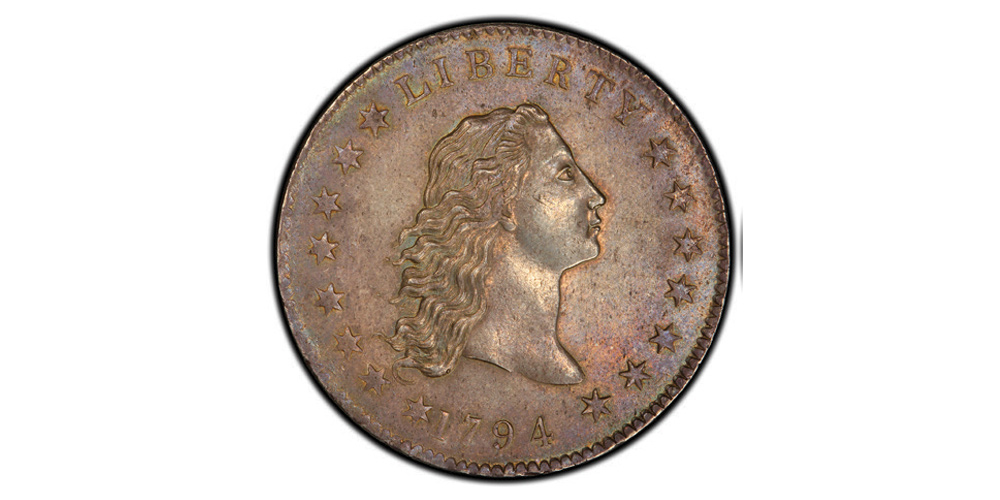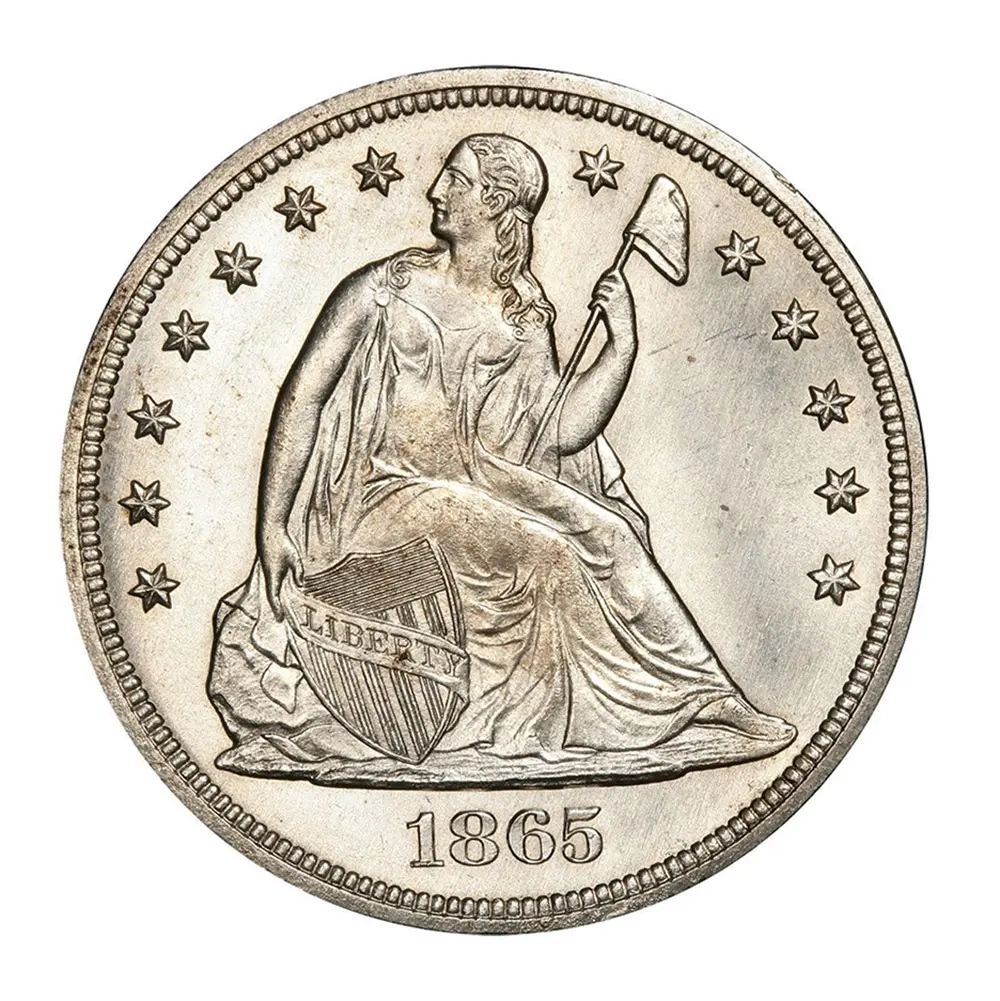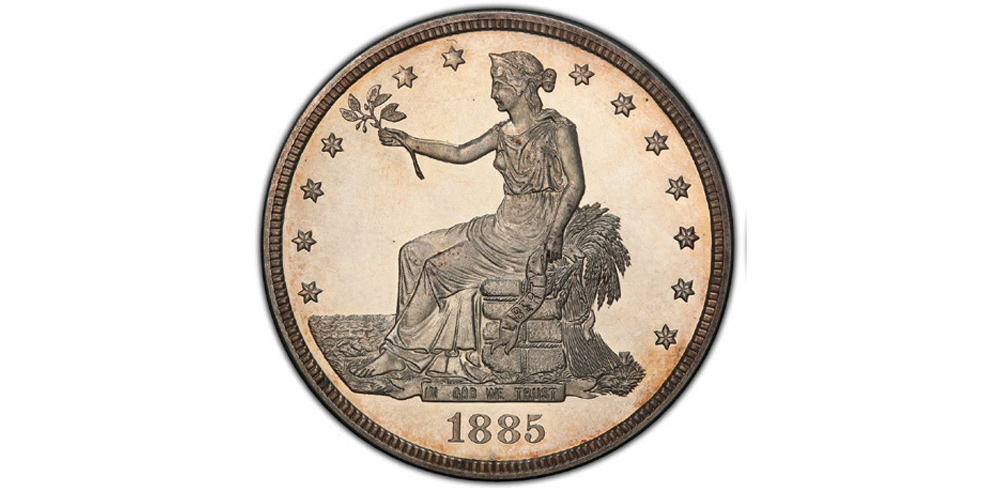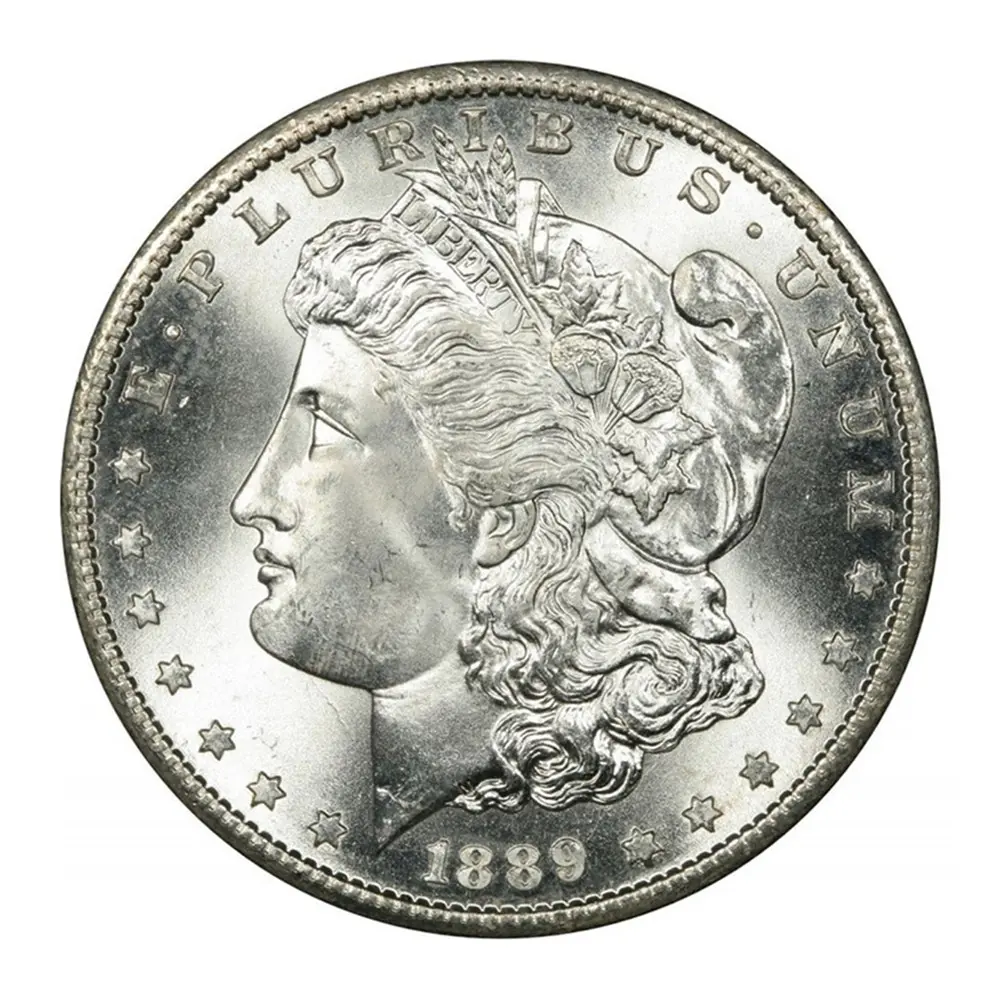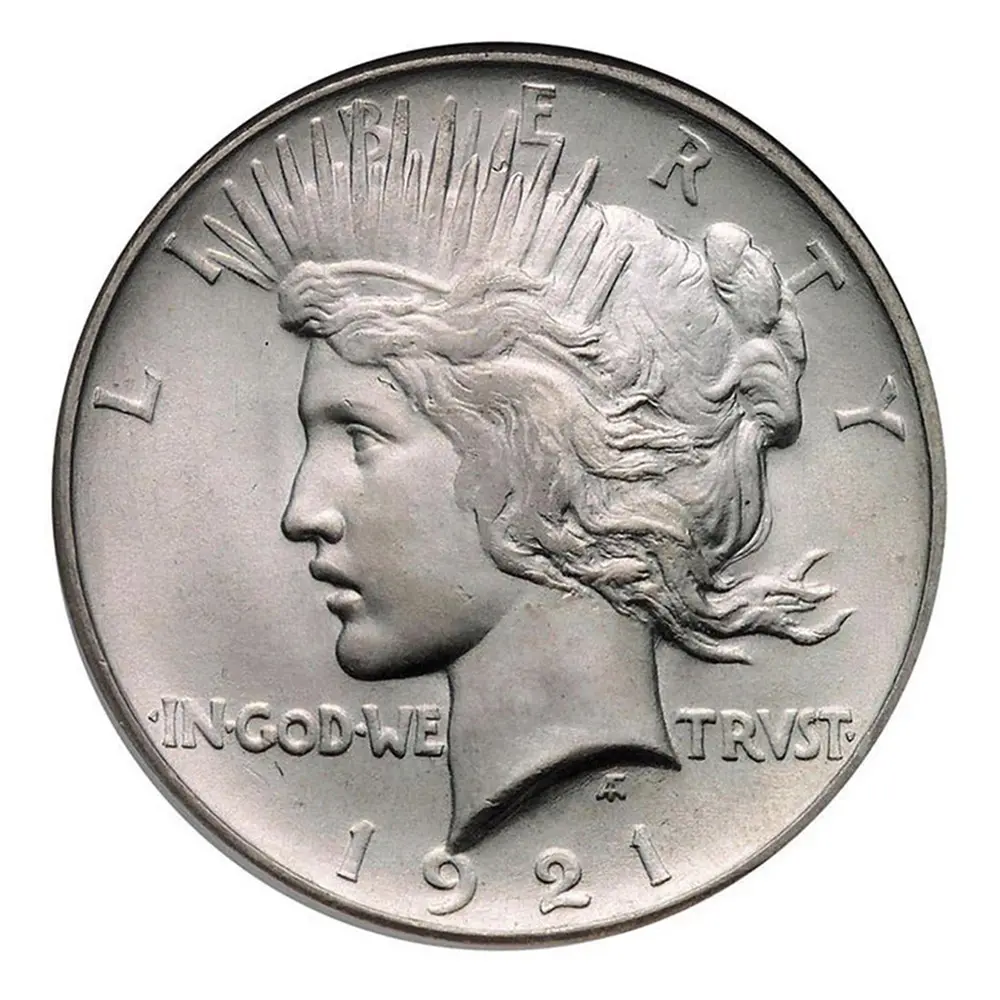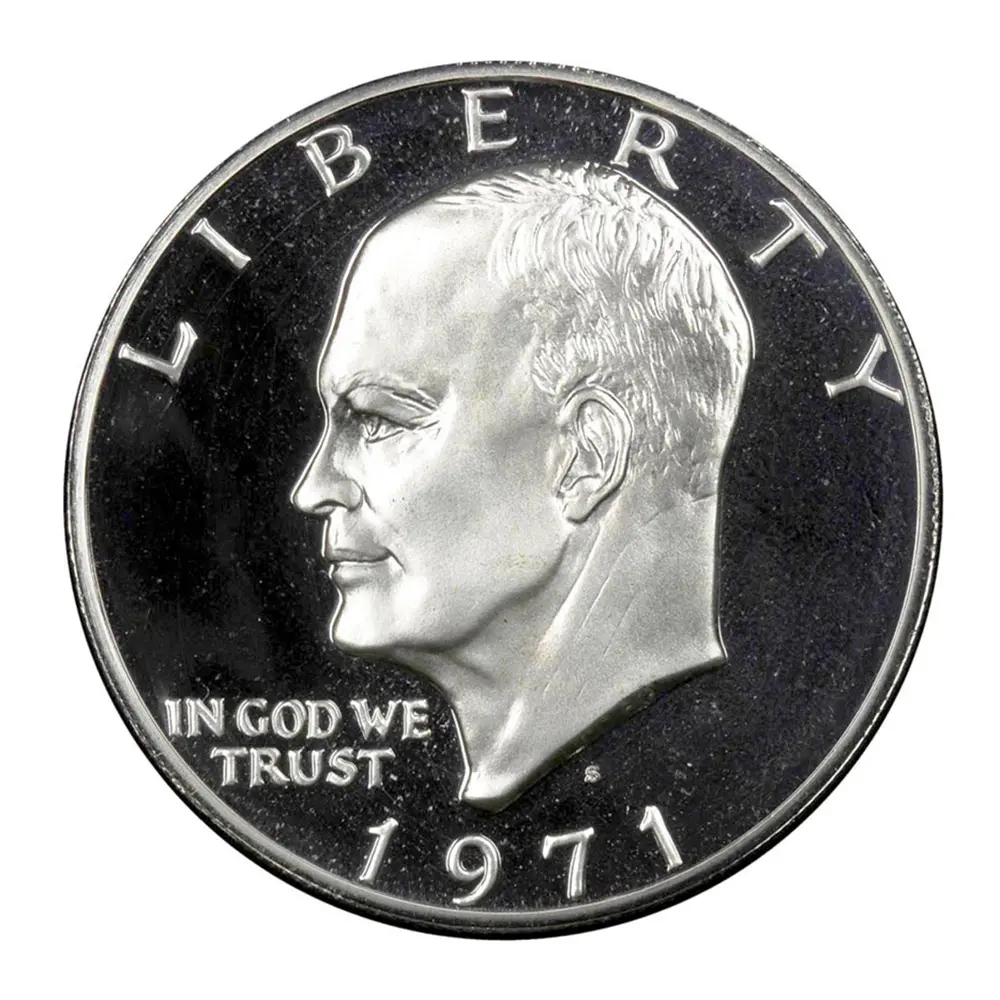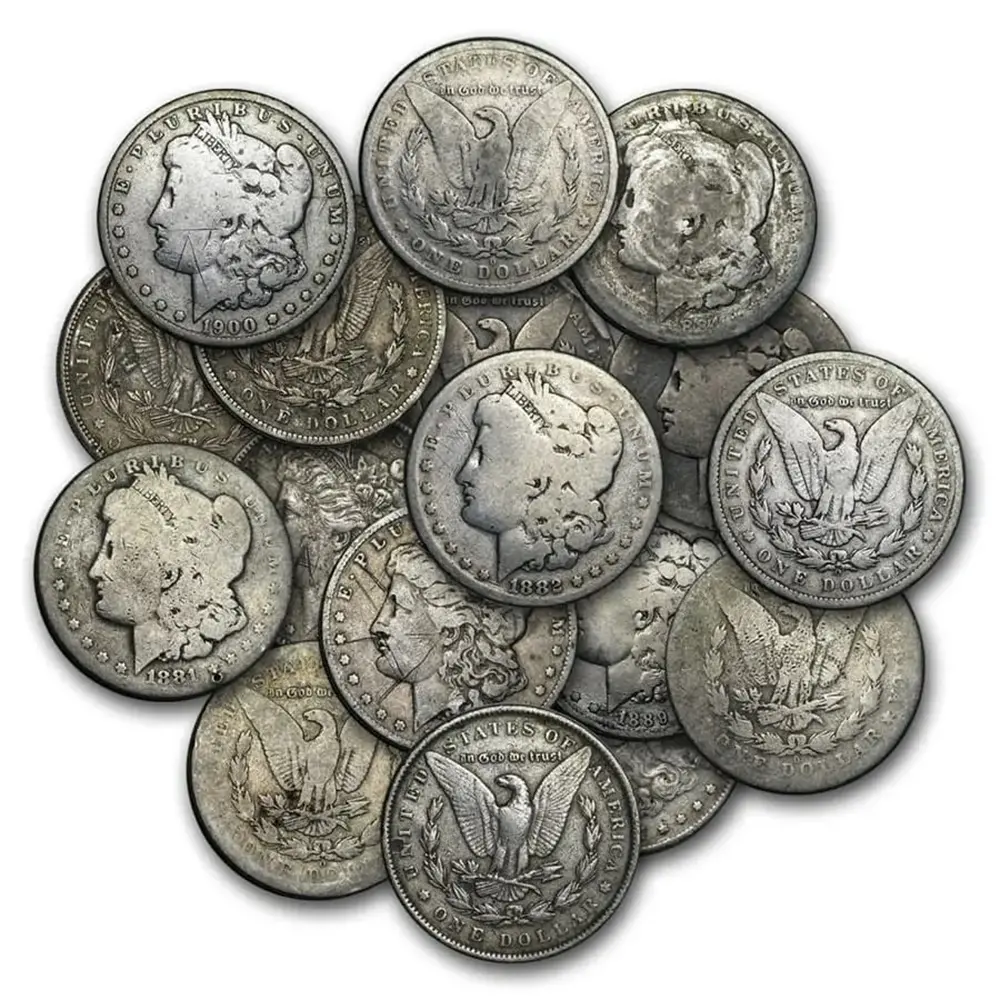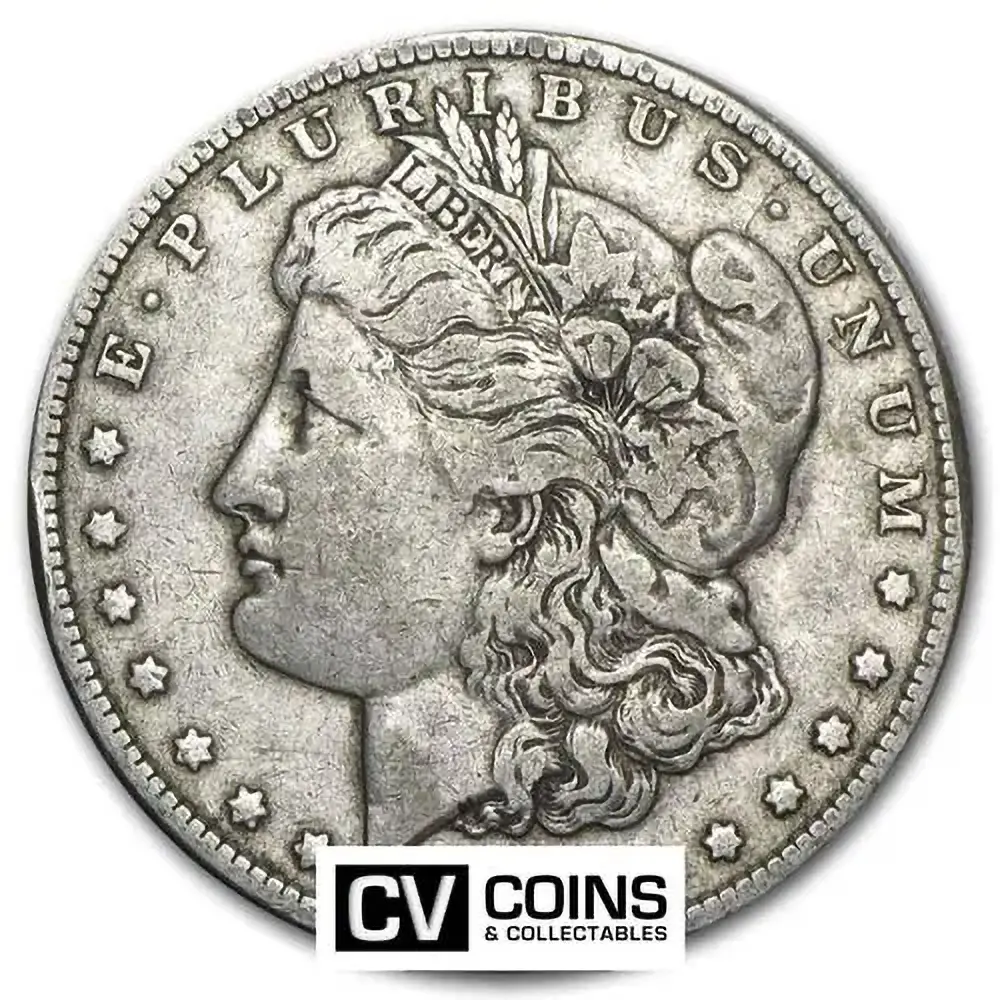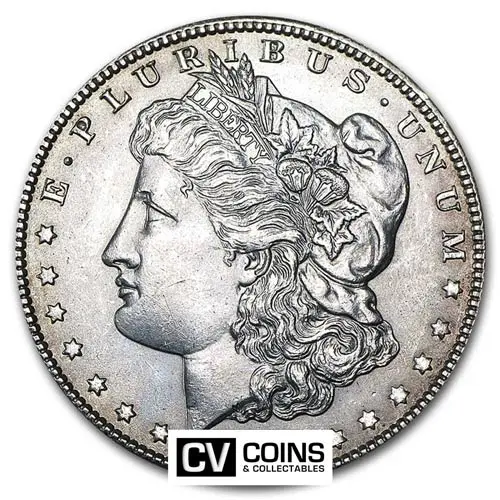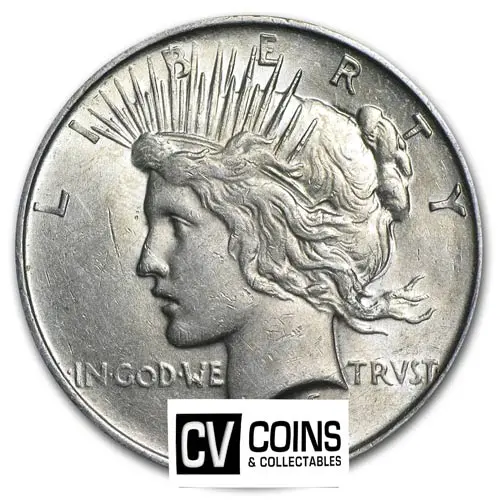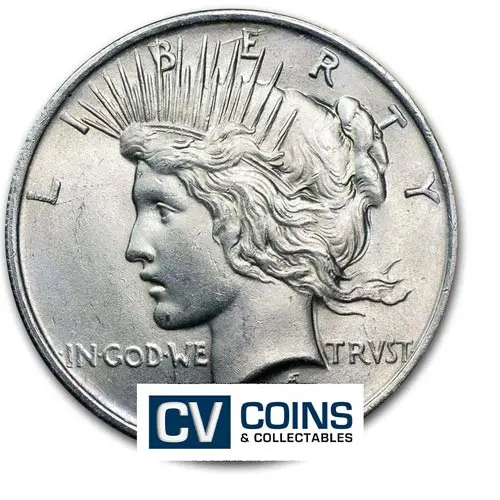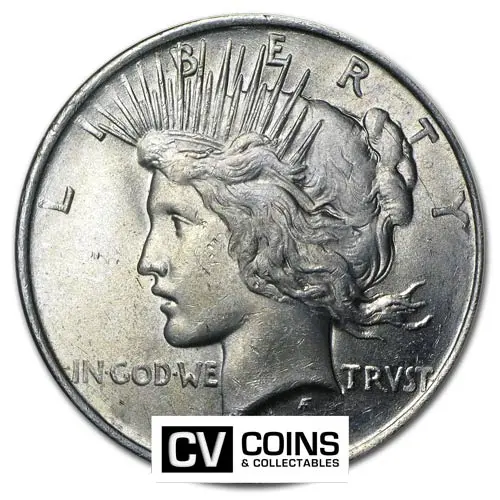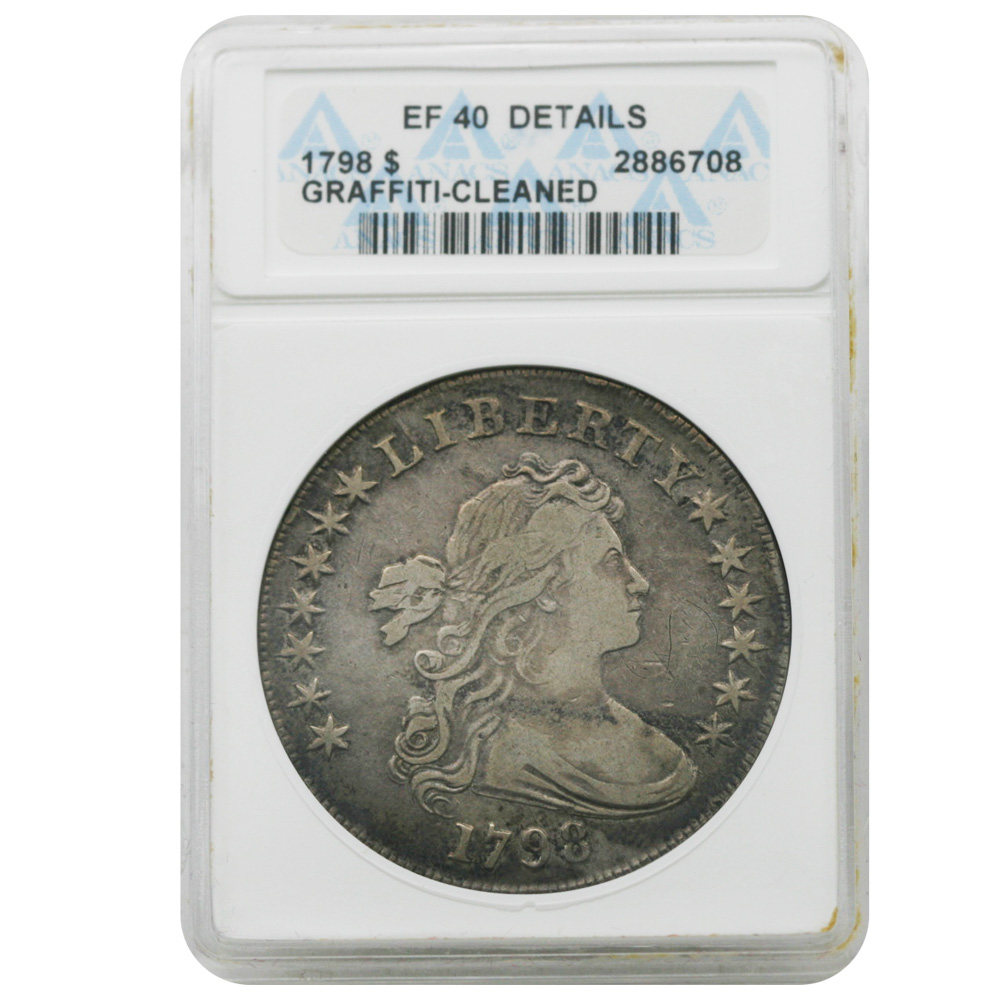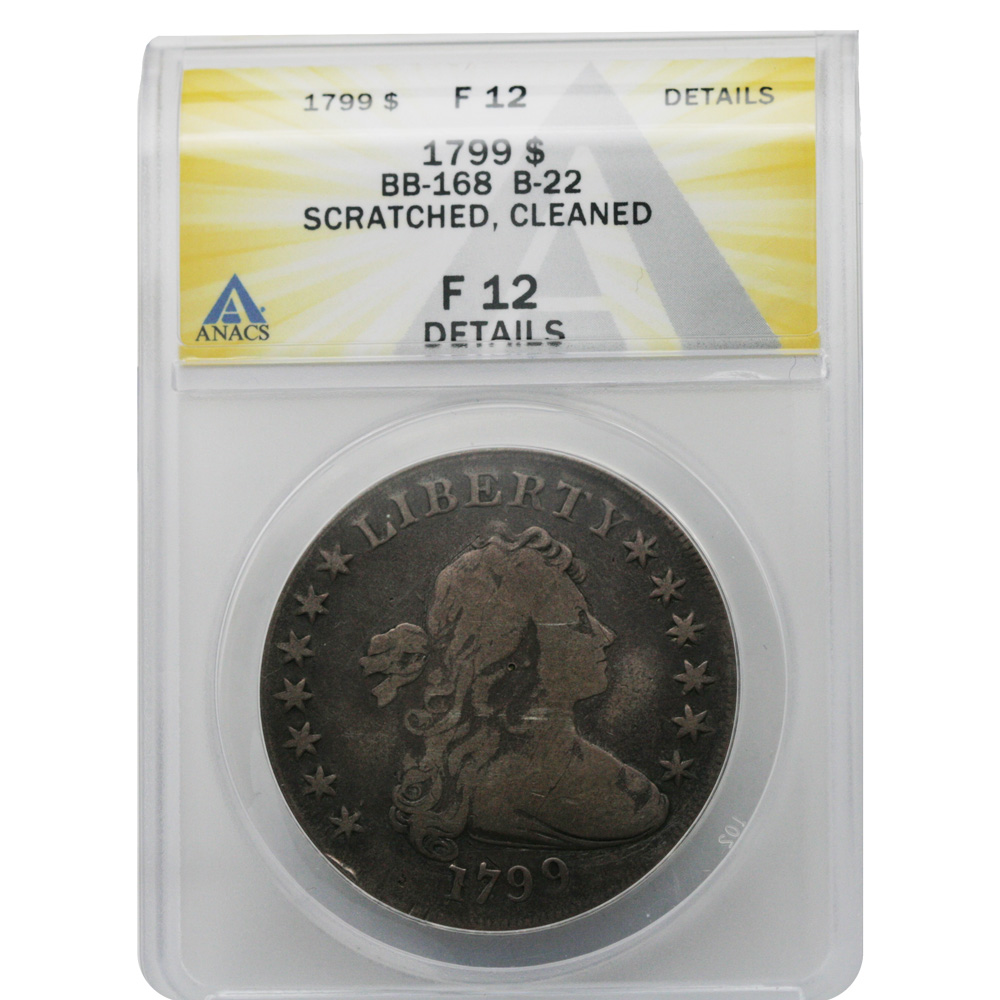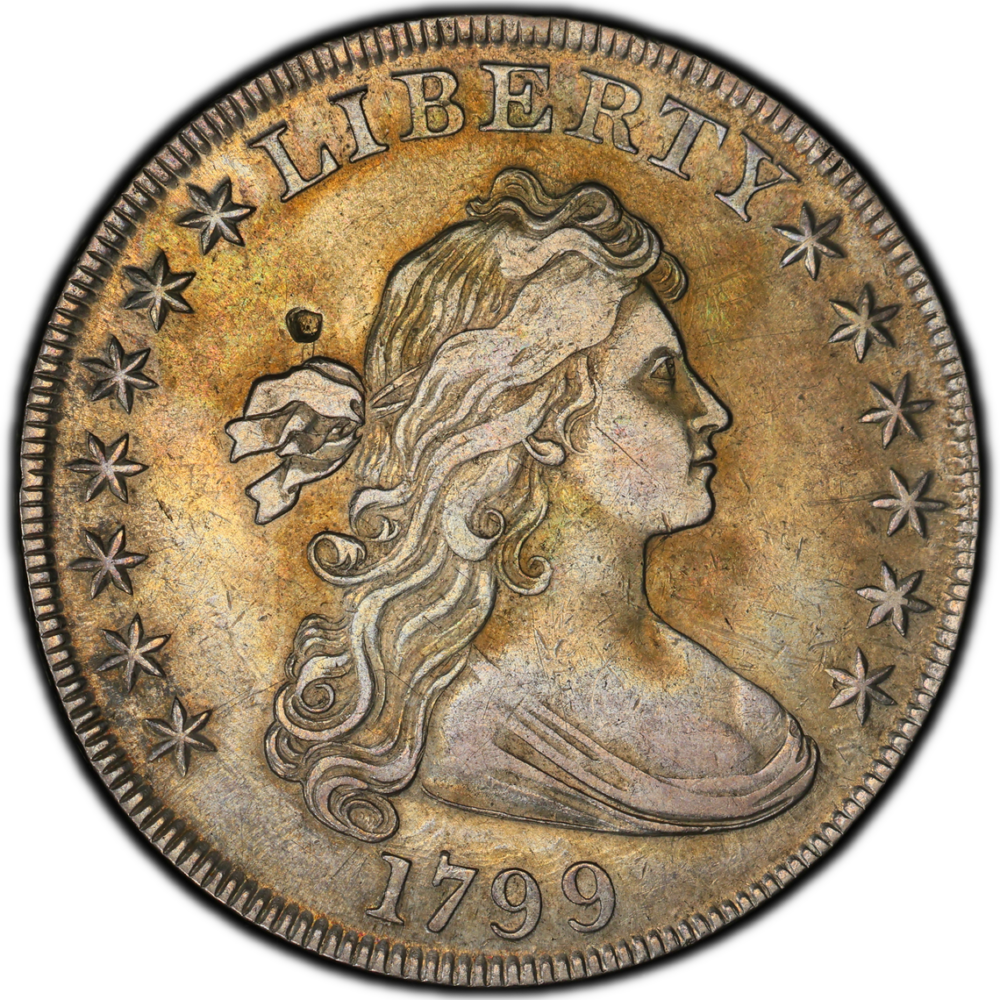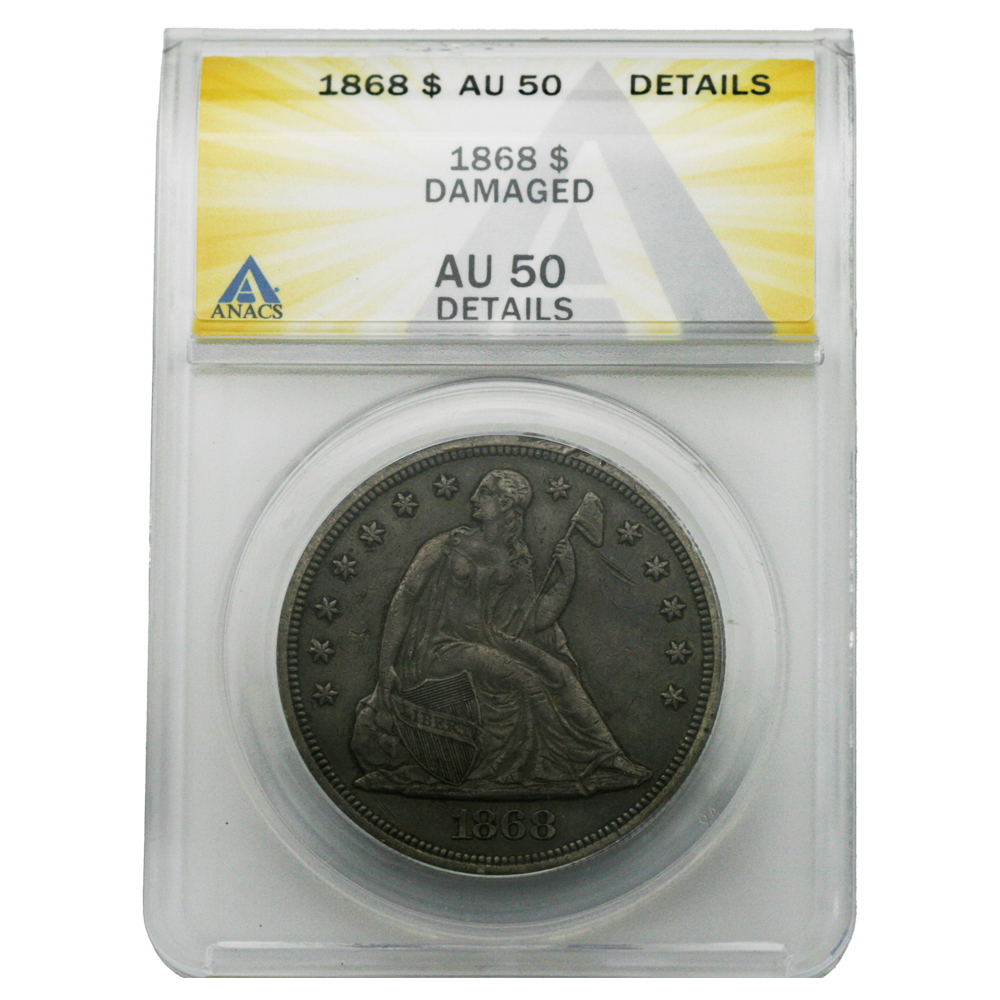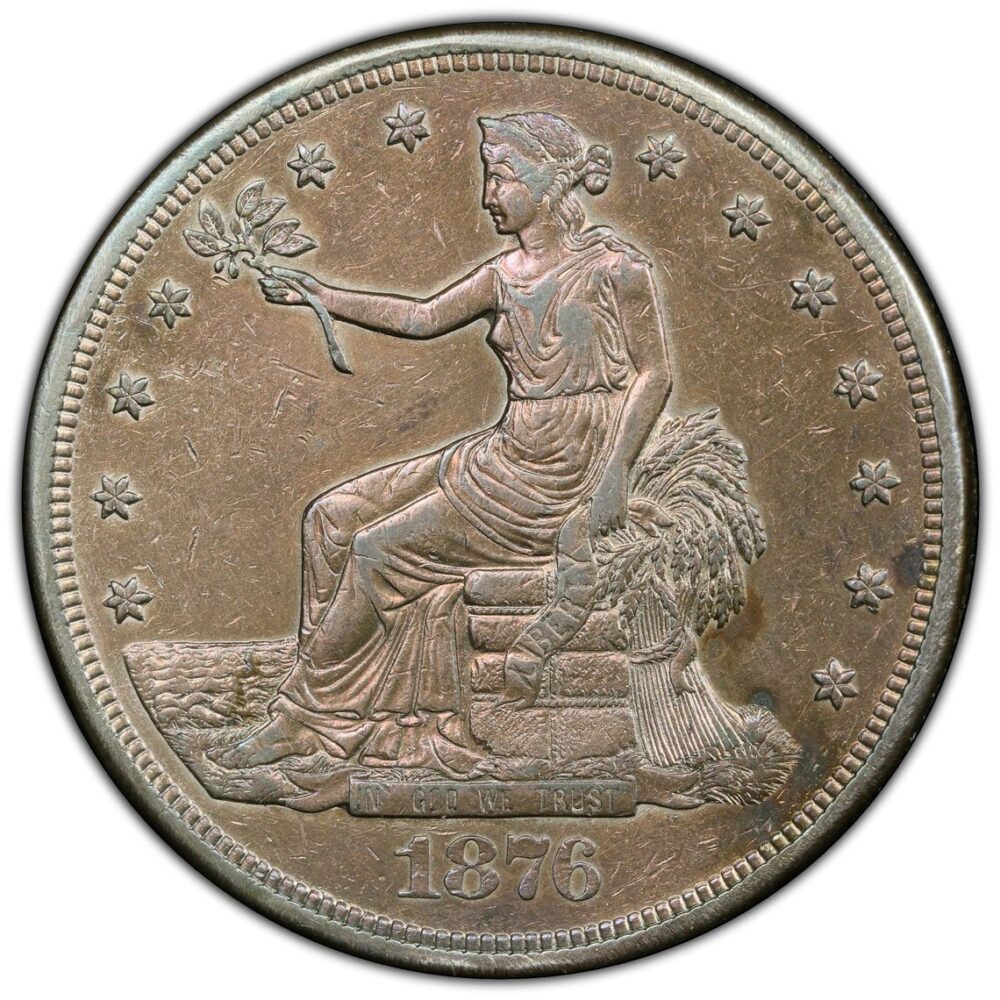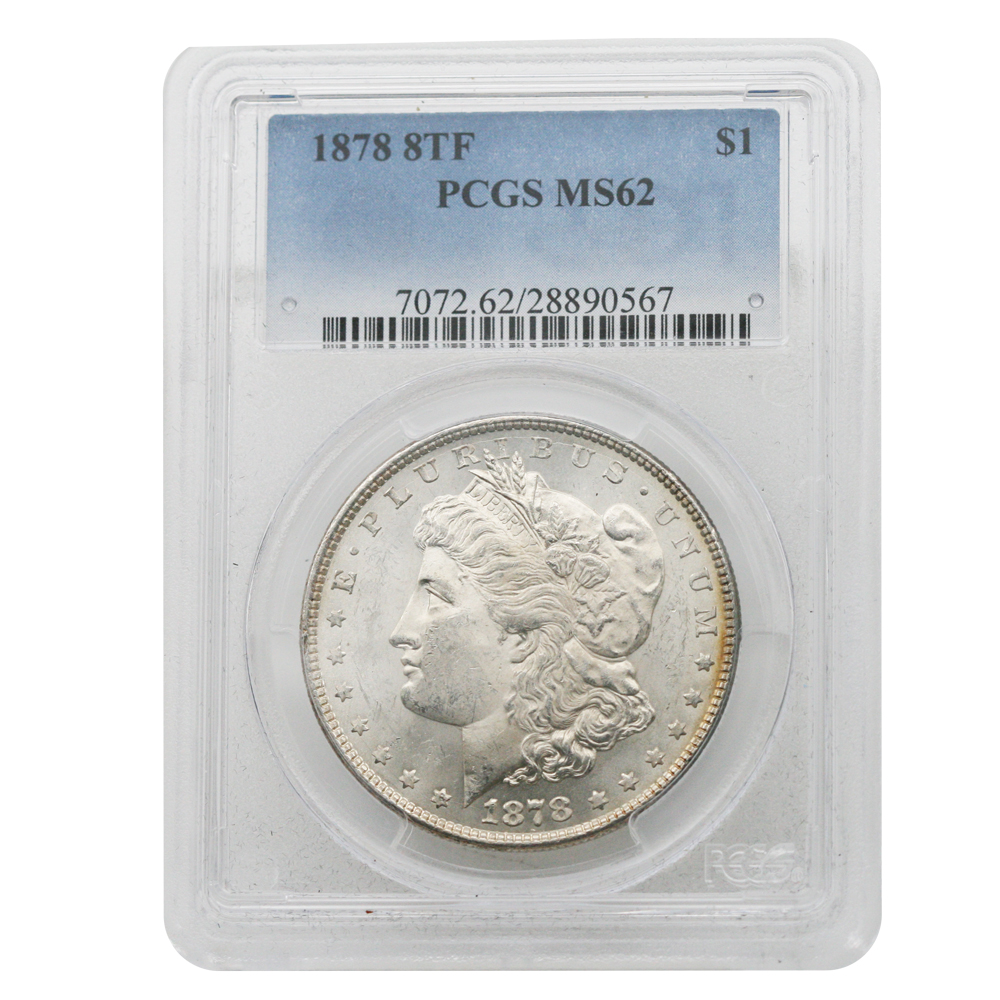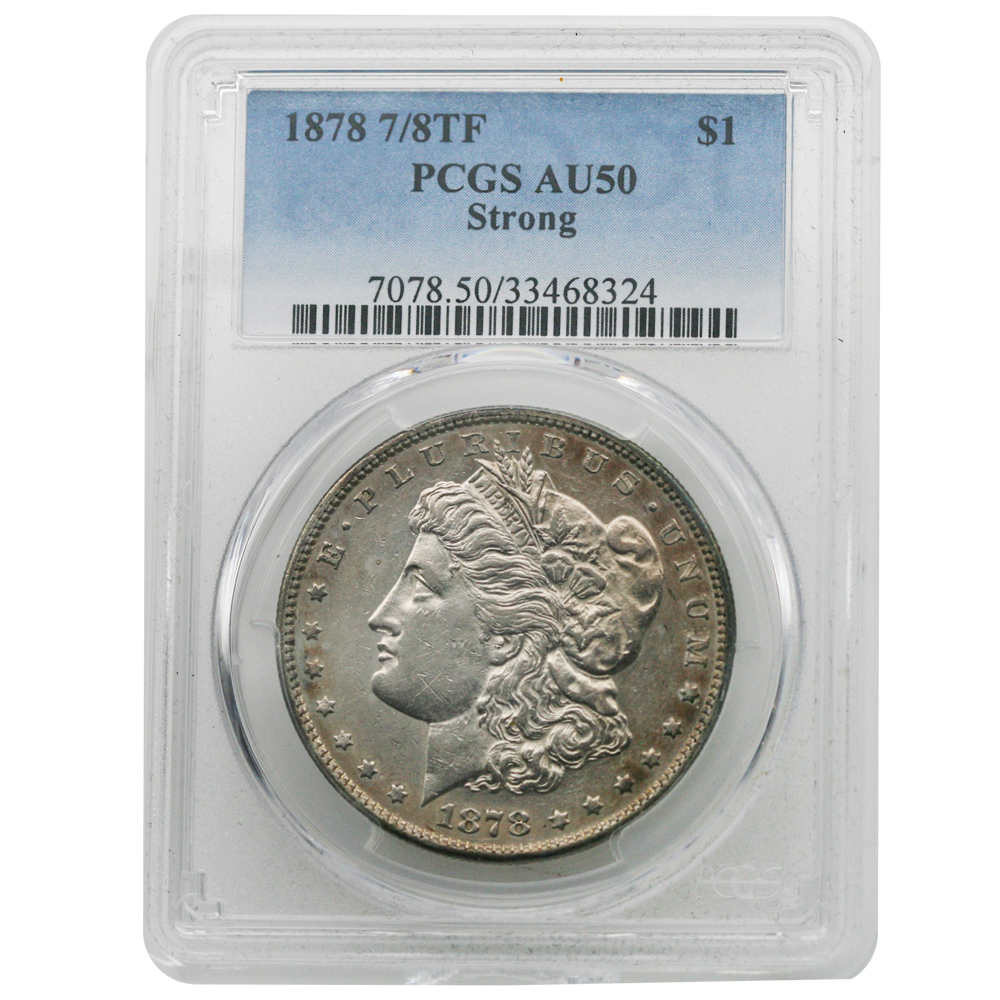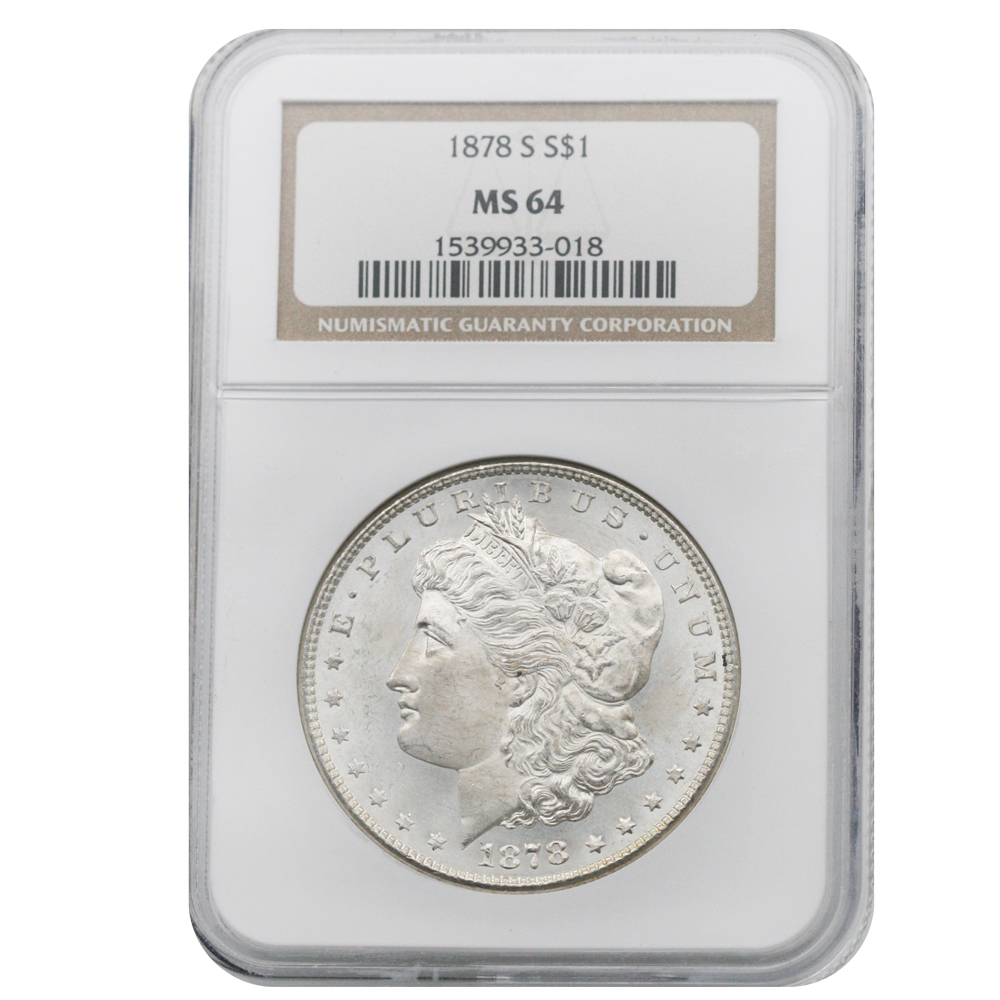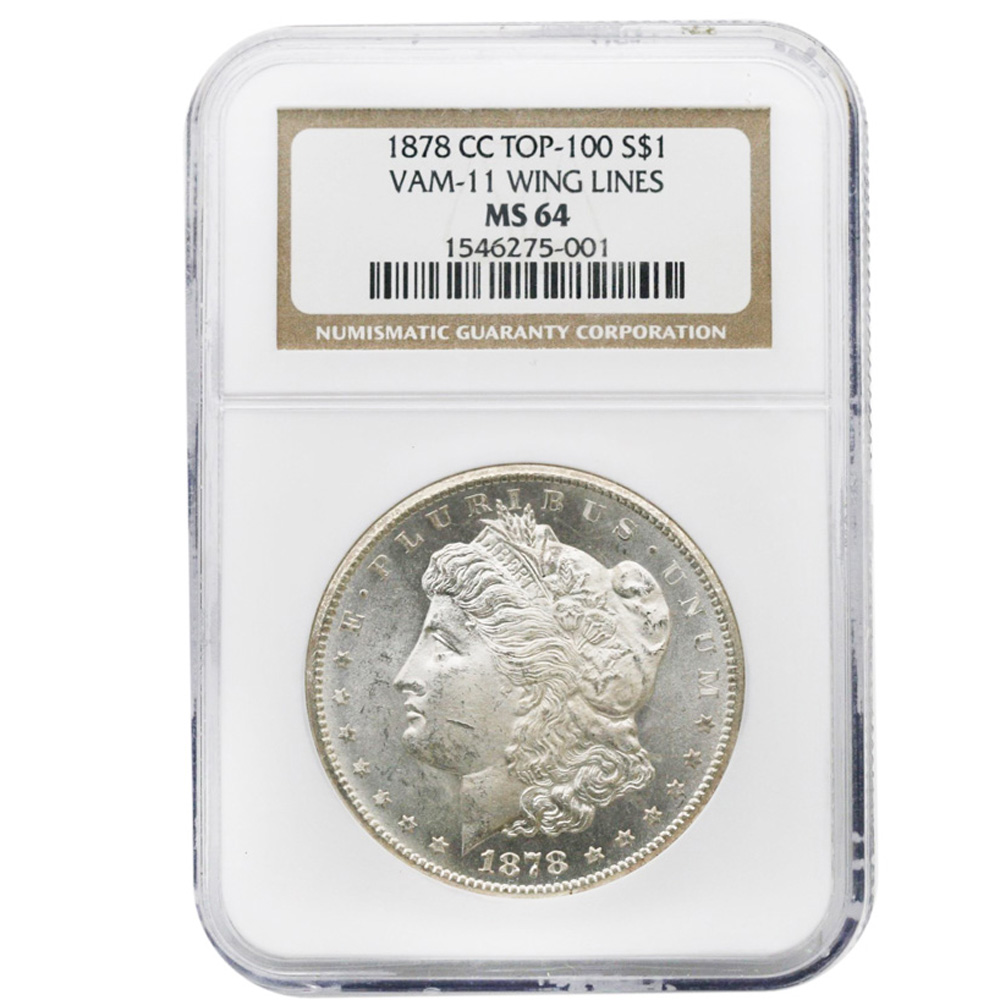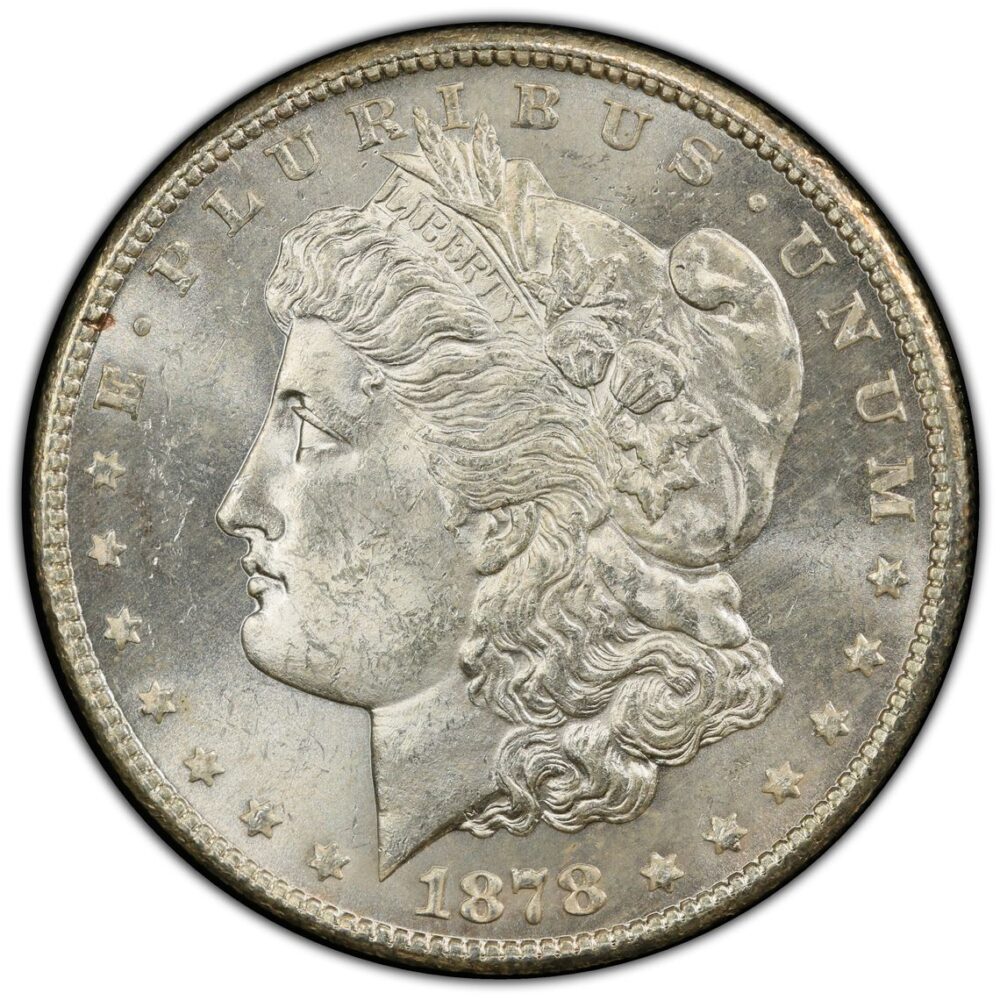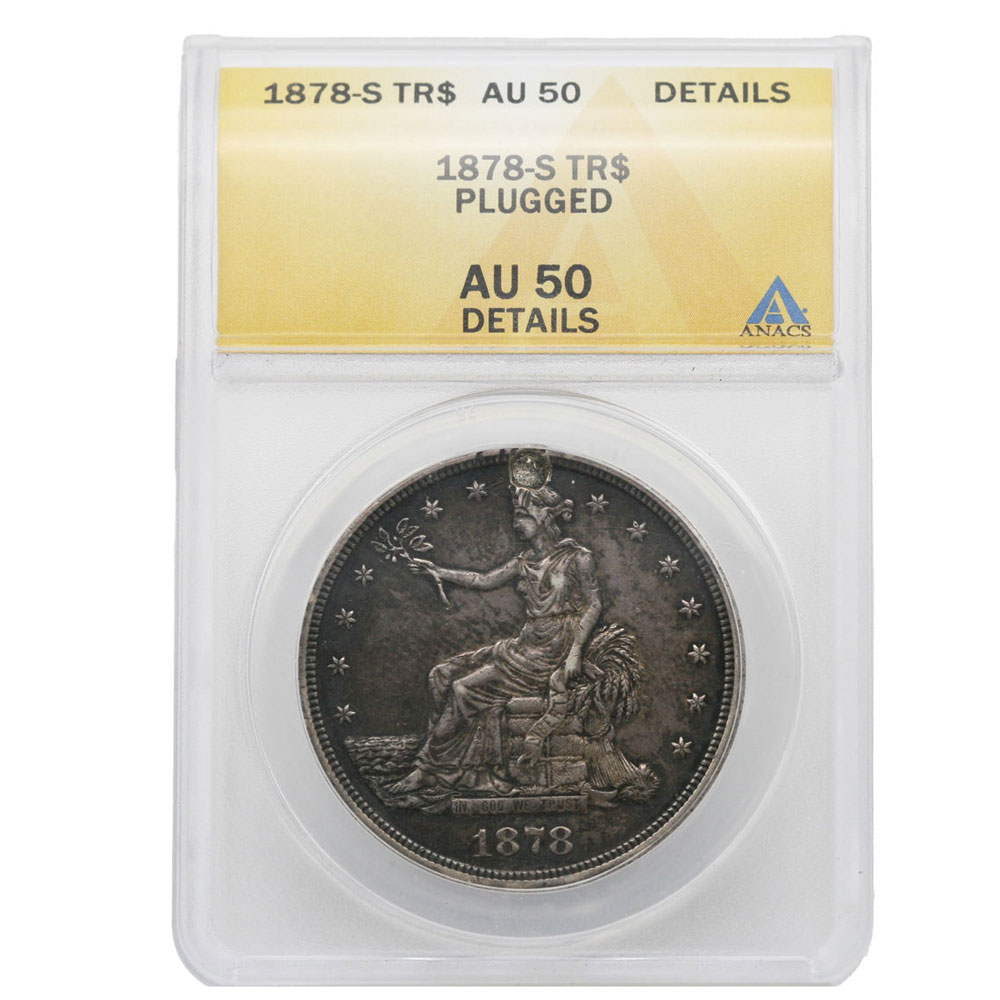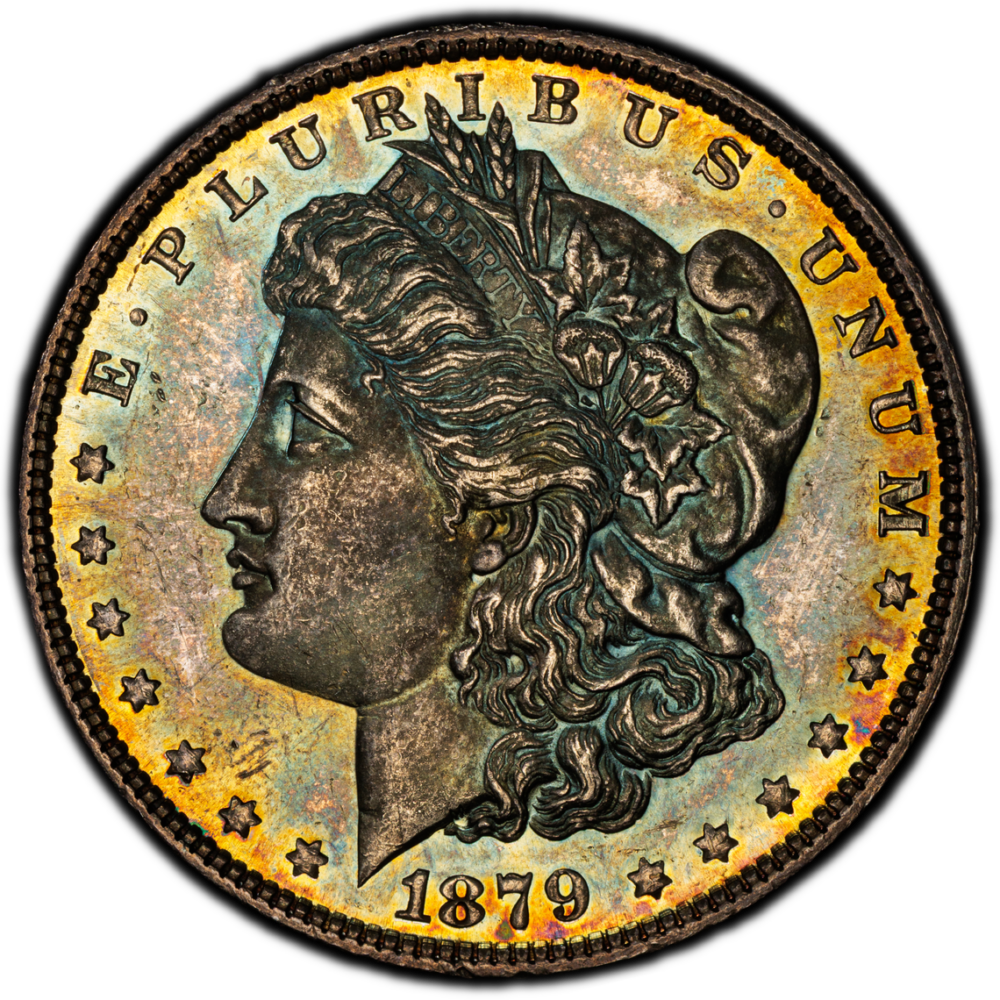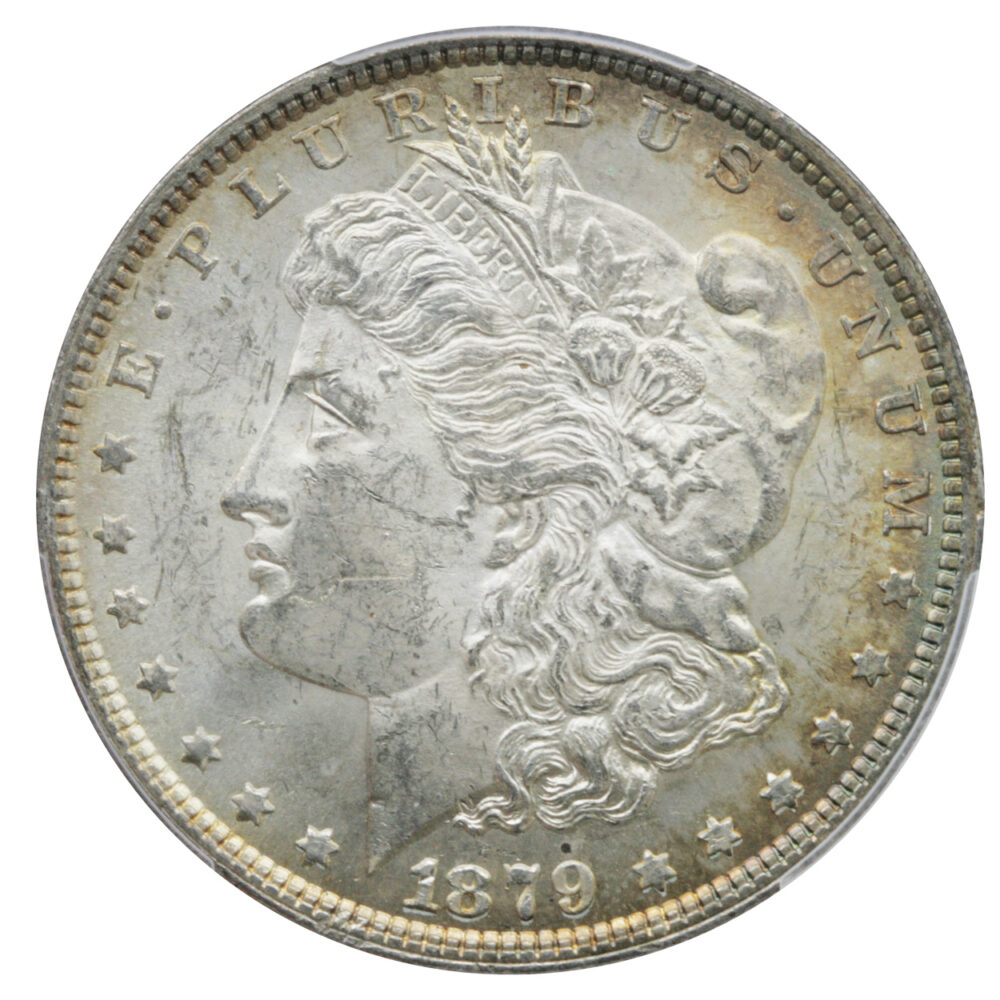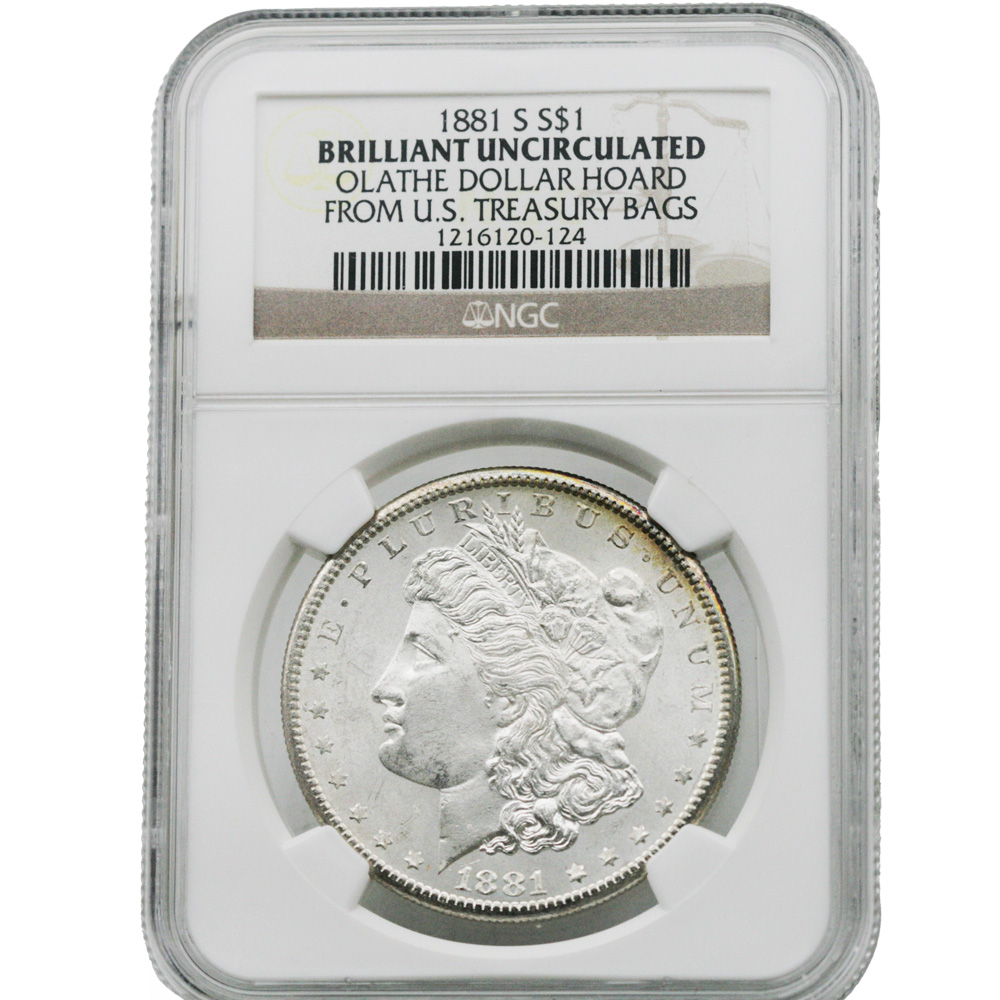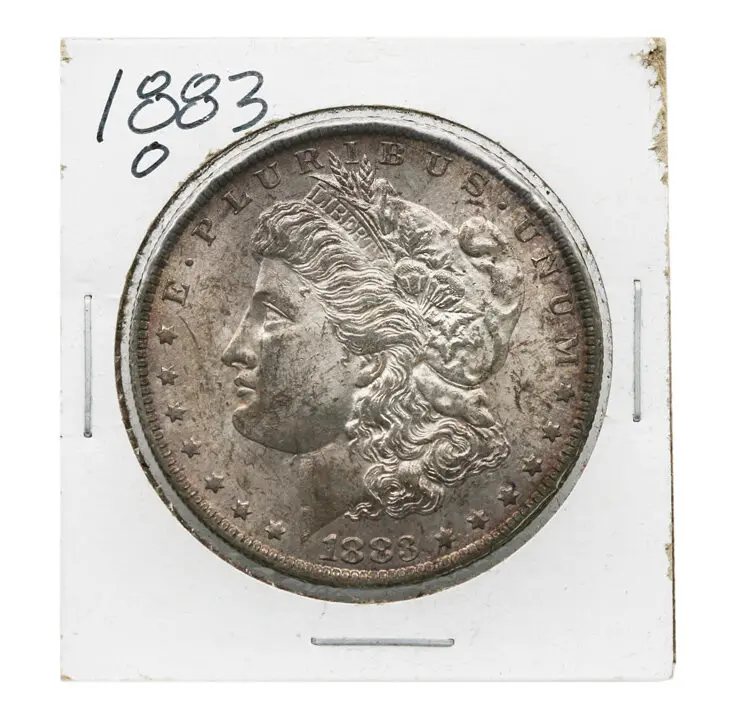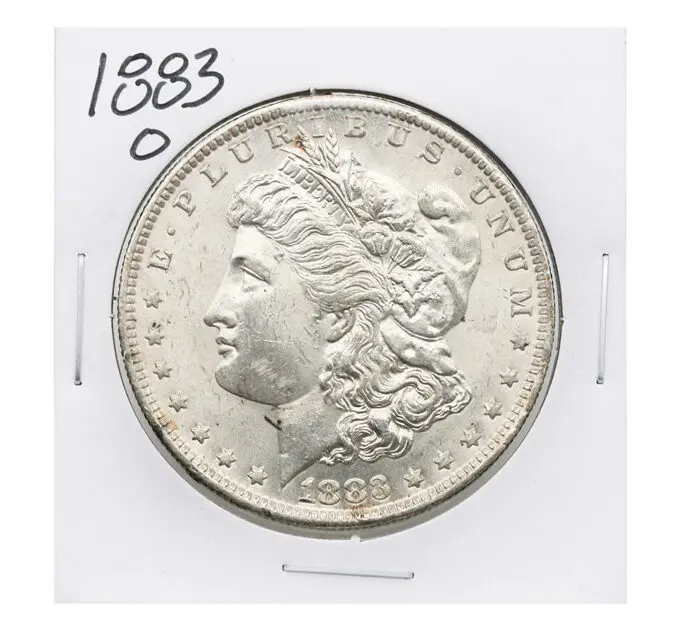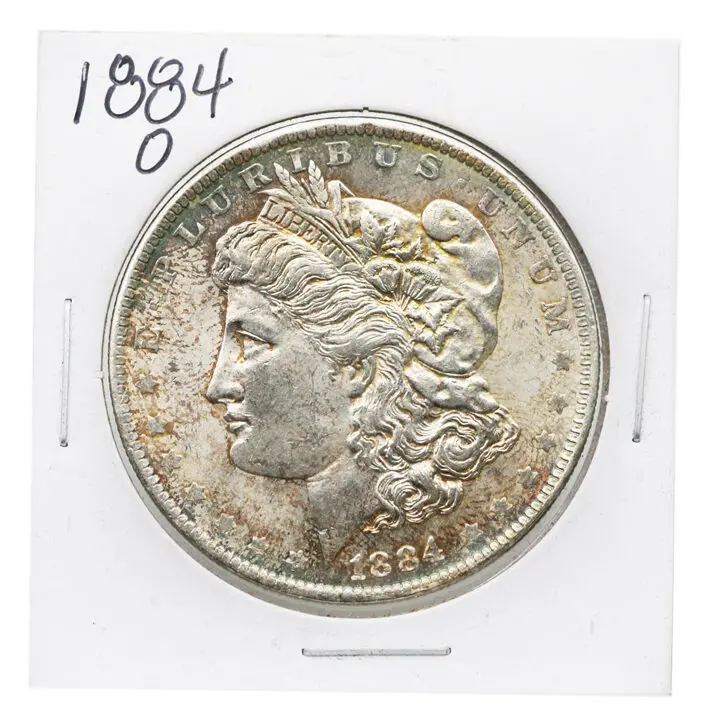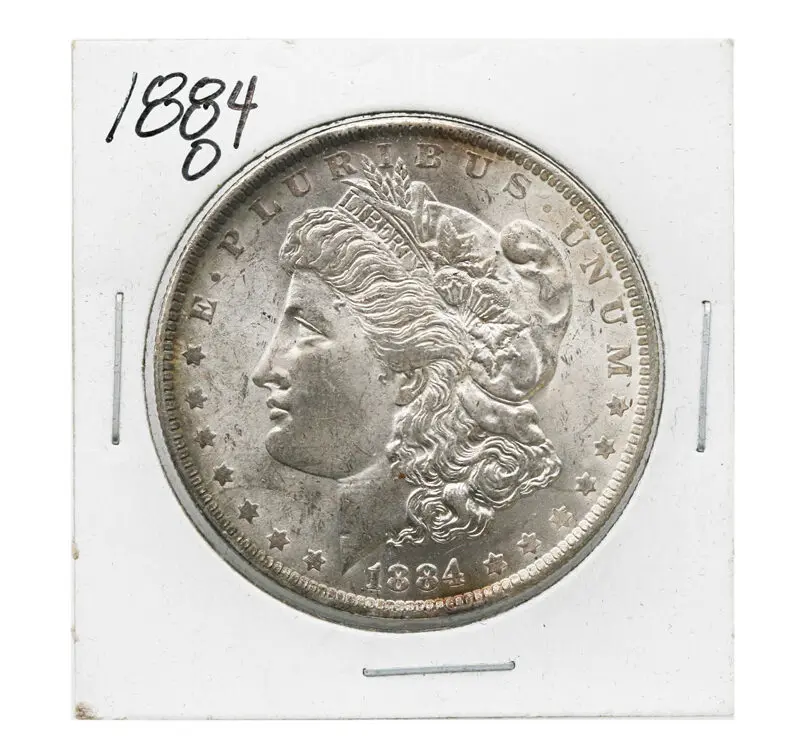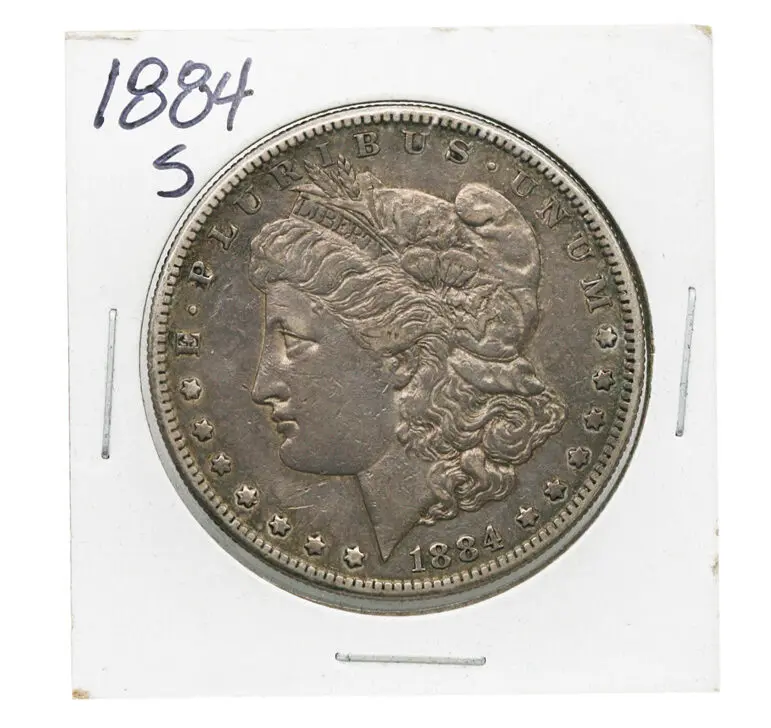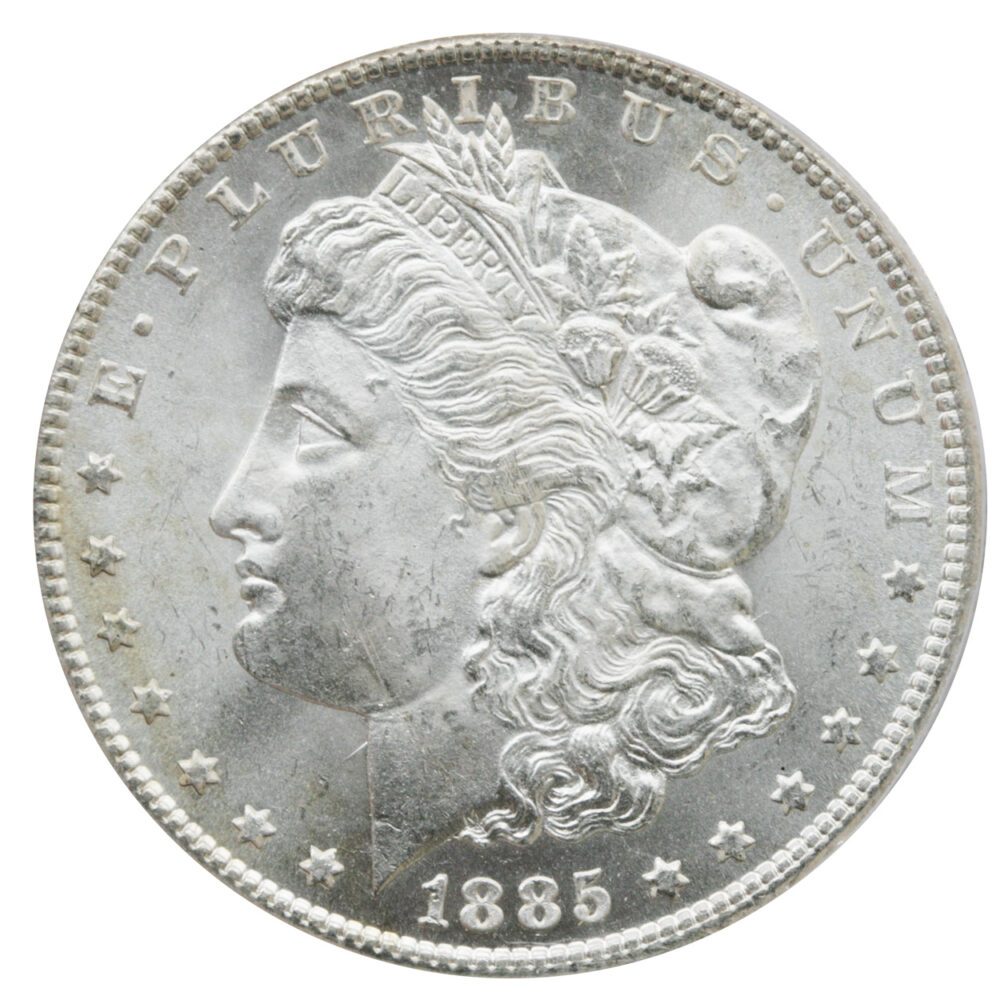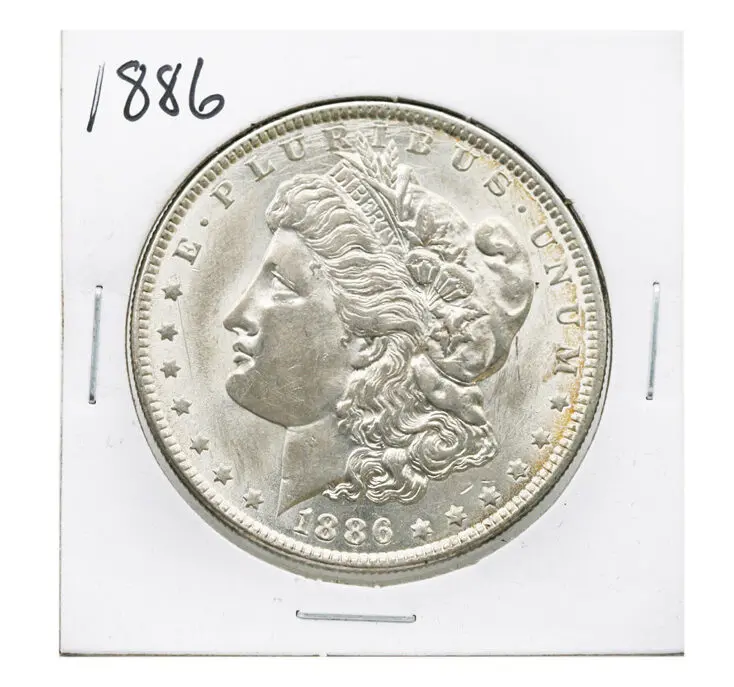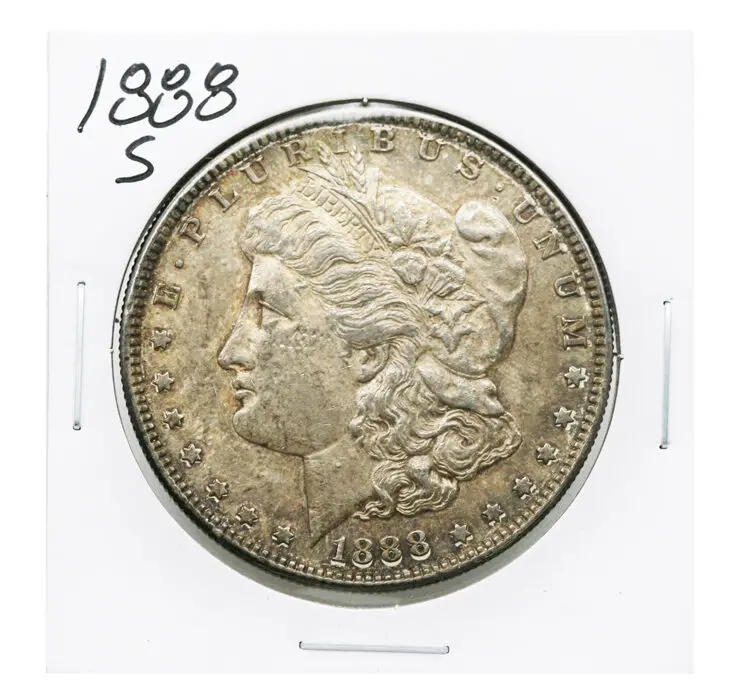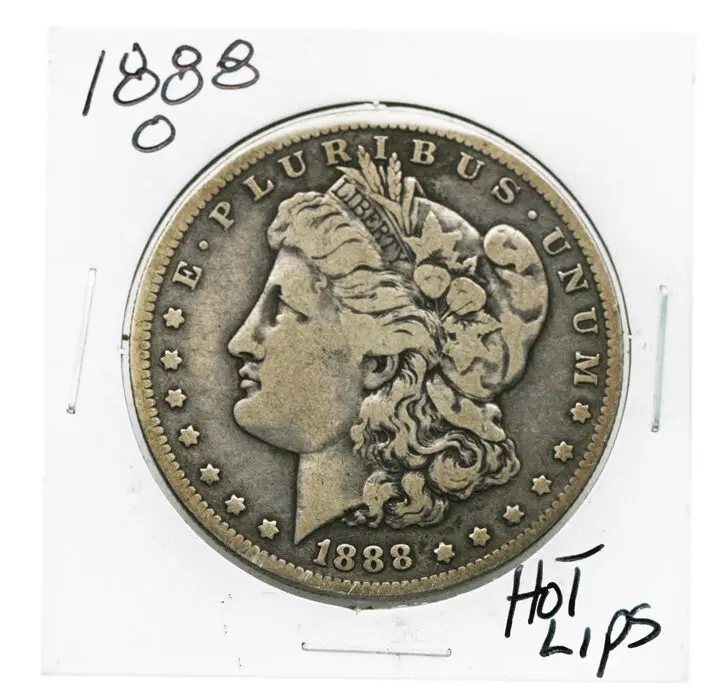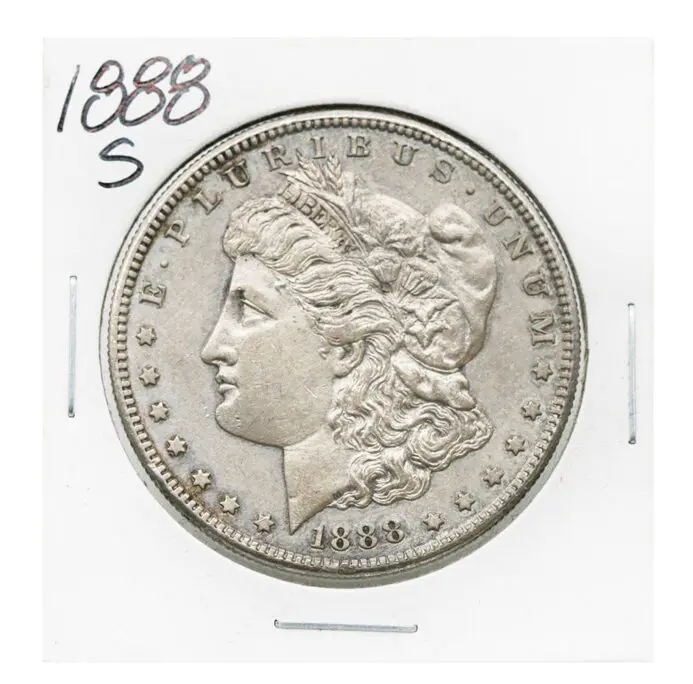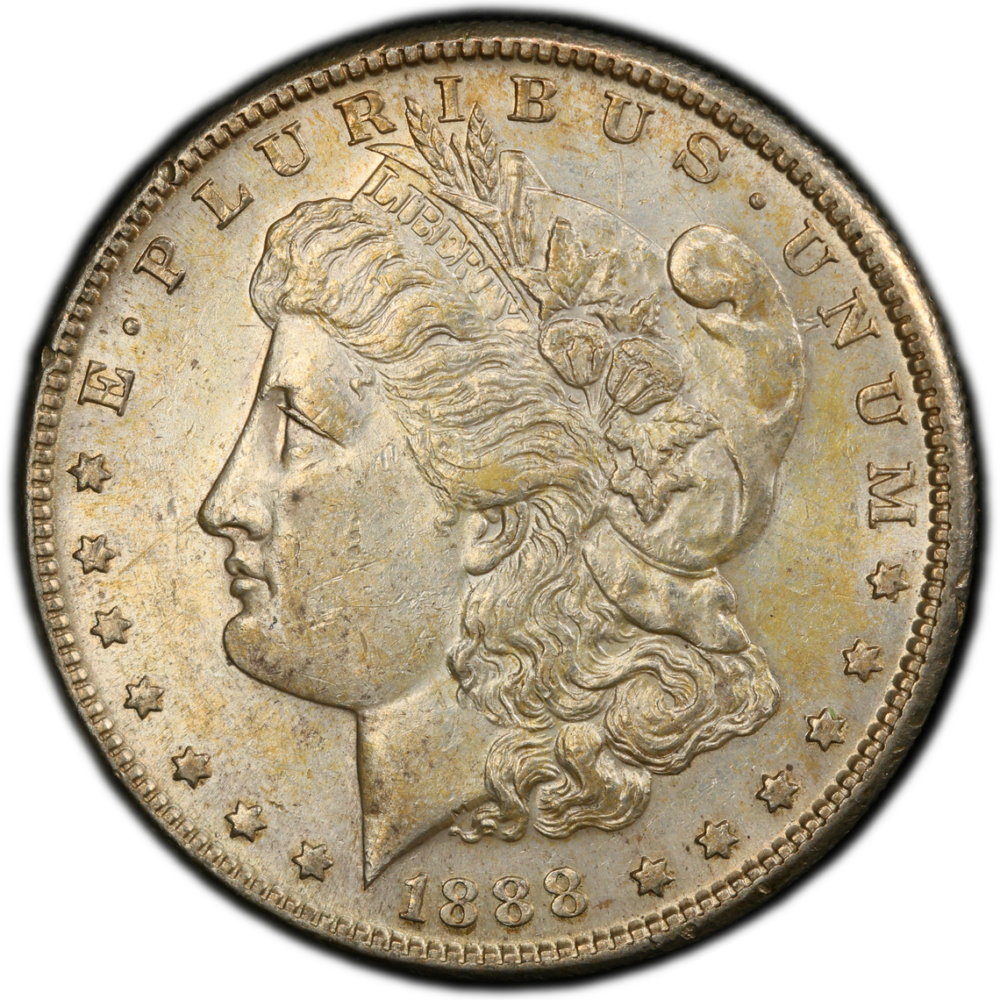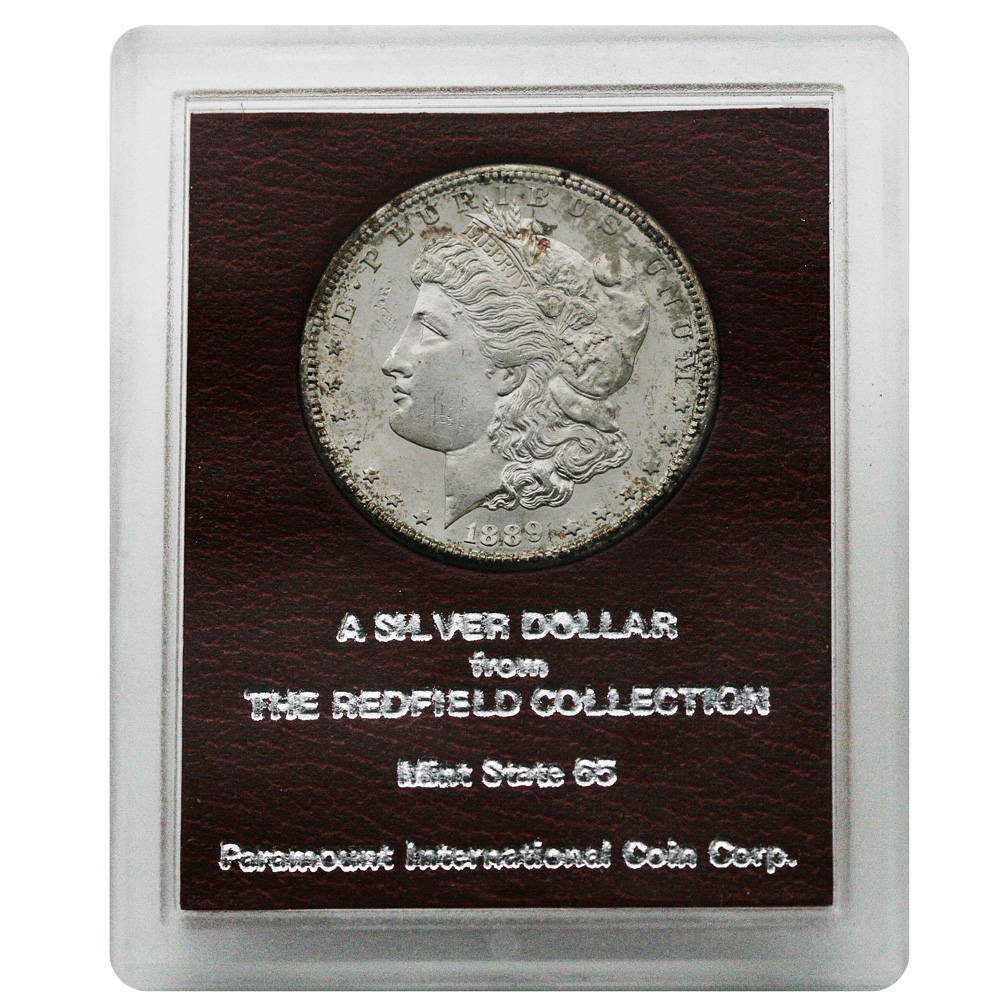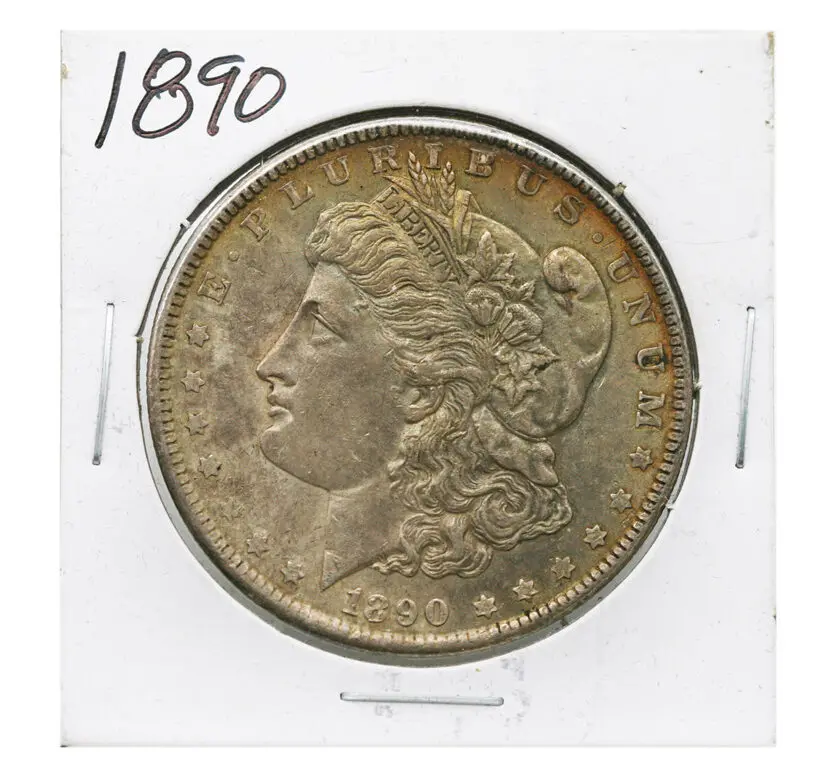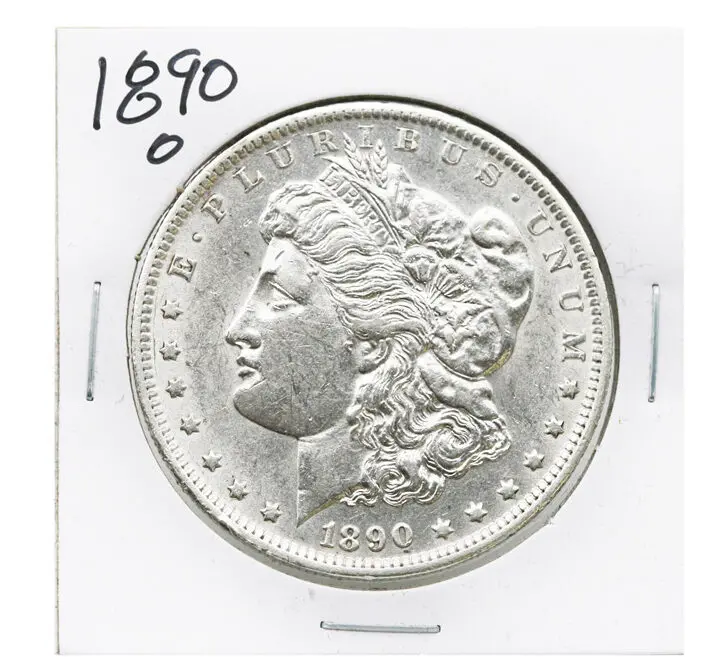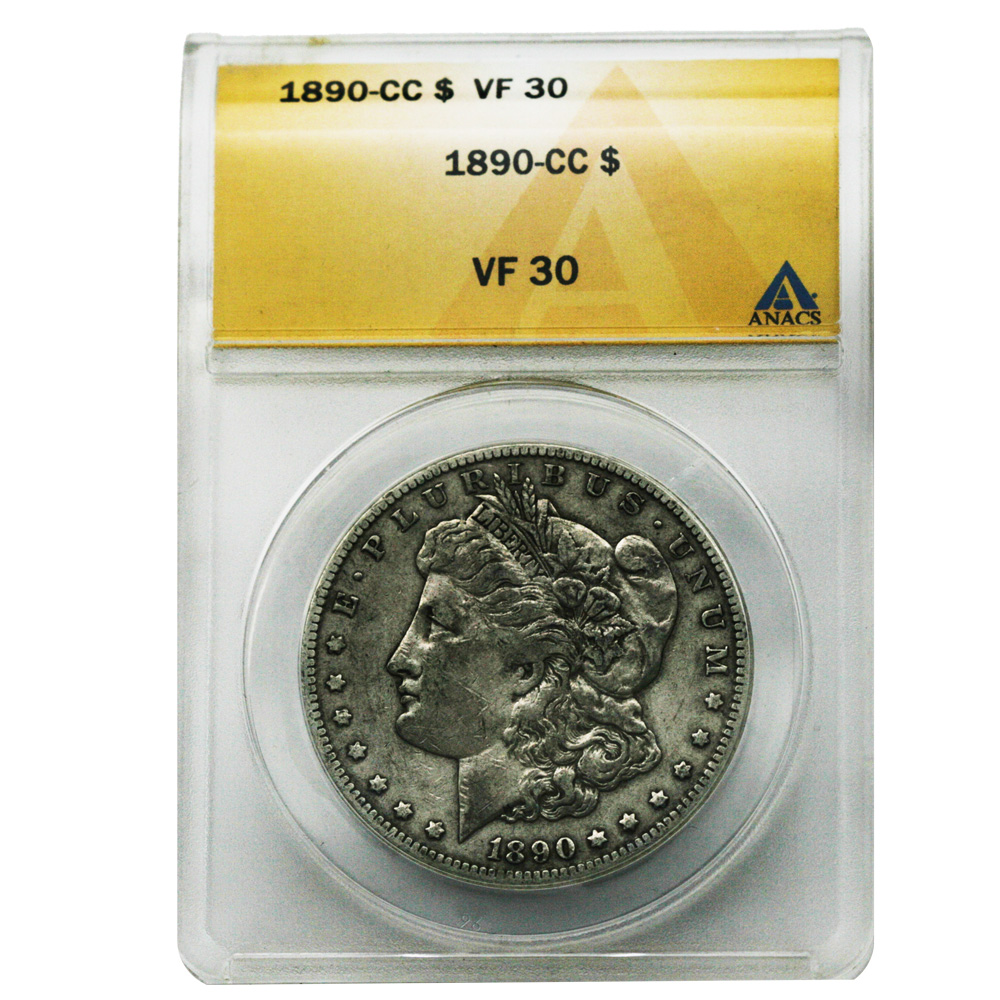Silver Dollars (1794-1978)
Flowing Hair Dollars (1794–1795)
The Flowing Hair Dollar, struck only in 1794 and 1795, holds the honor of being the very first official silver dollar of the United States. Designed by Robert Scot, the obverse depicts Liberty with long flowing hair, while the reverse features a small eagle surrounded by a wreath. These coins were minted in very small numbers, with the 1794 issue totaling just 1,758 pieces, making it one of the most famous rarities in U.S. coinage. Because of their limited production and heavy circulation, surviving examples are often worn, and high-grade pieces are extraordinarily valuable. The Flowing Hair Dollar embodies the experimental beginnings of American coinage and remains one of the most coveted early federal issues. Here
Draped Bust Dollars (1795–1804)
Introduced in late 1795, the Draped Bust Dollar replaced the Flowing Hair design with a more elegant portrait of Liberty based on a sketch by artist Gilbert Stuart. Early issues carried a small eagle reverse from 1795 to 1797, but beginning in 1798 the design shifted to a heraldic eagle modeled after the Great Seal of the United States. Mintages were higher than those of Flowing Hair Dollars but still modest by later standards. Among the most famous coins in the entire series is the 1804 Draped Bust Dollar, known as the “King of American Coins.” Although dated 1804, these pieces were struck decades later as presentation coins for diplomatic gifts, with only 15 known today. Collectors value Draped Bust Dollars for their artistic refinement, their rarity in high grades, and the abundance of die varieties that make them a fertile ground for specialists. Here
Gobrecht Dollars (1836–1839)
After a long hiatus in silver dollar production, the Mint reintroduced the denomination with the Gobrecht Dollar. Designed by Christian Gobrecht, these coins featured Liberty seated on a rock on the obverse and a soaring eagle on the reverse. Struck in extremely limited numbers from 1836 through 1839, most are proof or prooflike in quality, and they served as a transition into the later Liberty Seated Dollar design. Gobrecht Dollars are historically significant as they represent both a revival of the silver dollar and an experimental phase in U.S. coinage. Collectors highly prize them for their artistry, low mintages, and importance as precursors to later 19th-century dollar coins. Here
Liberty Seated Dollars (1840–1873)
The Liberty Seated Dollar, also designed by Gobrecht, was issued regularly from 1840 until 1873. The obverse depicts Liberty seated on a rock, holding a liberty pole and shield, while the reverse bears a heraldic eagle. Most issues were struck in low numbers and many were shipped overseas, where they circulated alongside Mexican Pesos in Asia. Notable rarities include the 1851 and 1852 issues with mintages of barely over a thousand coins, as well as the legendary 1870-S, of which fewer than a dozen exist. Liberty Seated Dollars are challenging to collect, as high-grade circulation strikes are rare, and many later issues exist only as proofs. Here
Trade Dollars (1873–1885)
Authorized by the Coinage Act of 1873, the Trade Dollar was intended specifically for overseas commerce, particularly with China. Designed by William Barber, the obverse shows Liberty seated on a bale of goods, symbolizing trade, while the reverse eagle proclaims the weight and fineness: “420 GRAINS, 900 FINE.” Slightly heavier than earlier dollars, the Trade Dollar competed directly with Mexican pesos in Asian markets. Although initially legal tender in the U.S., their status was revoked in 1876 after they were used to pay workers at less than face value during falling silver prices. Circulation strikes were produced until 1878, while later years (1879–1885) are proof-only, with the 1884 and 1885 Proofs ranking among the rarest U.S. coins. Collectors today value Trade Dollars not only for their rarity but also for chopmarked examples, which bear Chinese merchants’ stamps authenticating their silver content. Here
Morgan Dollars (1878–1921)
The Morgan Dollar is perhaps the most beloved American silver dollar. Designed by George T. Morgan, its obverse features a bold Liberty portrait, while the reverse depicts an eagle with outstretched wings. Minted in massive numbers across multiple mints, the Morgan Dollar was both a workhorse coin of the late 19th century and a symbol of the “Silver Dollar Era.” Despite large mintages, certain dates such as the 1893-S (100,000 minted), the 1889-CC, and the proof-only 1895 Philadelphia are considered major rarities. Additionally, condition rarities like the 1884-S and 1901-O are highly elusive in Gem grades. Morgans are extremely popular with collectors because they are accessible in circulated grades, yet they also offer legendary rarities that anchor elite collections. Here
Peace Dollars (1921–1935)
The Peace Dollar, designed by Anthony de Francisci, commemorated the end of World War I and symbolized America’s hope for peace. The obverse depicts a youthful Liberty with a radiant crown, while the reverse shows an eagle at rest holding an olive branch. The first year, 1921, was struck in high relief, creating one of the most beautiful but challenging issues in the series. Other key dates include the 1928 Philadelphia issue, the lowest-mintage business strike, and the 1934-S, a semi-key even in circulated grades. Collectors prize Peace Dollars for their symbolism, historic timing, and Art Deco-influenced design. They remain one of the most affordable entry points into classic silver dollar collecting while offering scarce keys that can challenge advanced collectors. Here
Eisenhower Dollars (1971–1978, Silver Issues)
After a long absence of circulating silver dollars, the Eisenhower Dollar was introduced in 1971, honoring both President Dwight D. Eisenhower and the Apollo 11 moon landing. Designed by Frank Gasparro, it features Eisenhower’s portrait on the obverse and the Apollo mission insignia on the reverse. Most were struck in copper-nickel clad for circulation, but special collector issues from 1971 through 1976 were made in 40% silver. The Bicentennial issues of 1975–1976, featuring the dual date “1776–1976” and a Liberty Bell superimposed on the moon, are especially popular with collectors. Though not rare, silver Eisenhower Dollars provide an affordable conclusion to America’s long history of true silver dollars, bridging the gap between classic and modern coinage. Here

